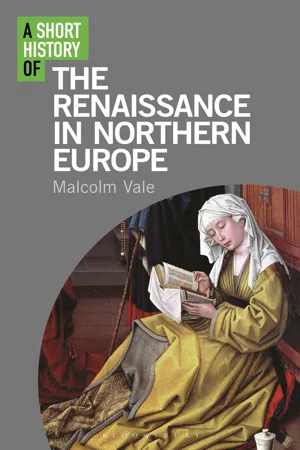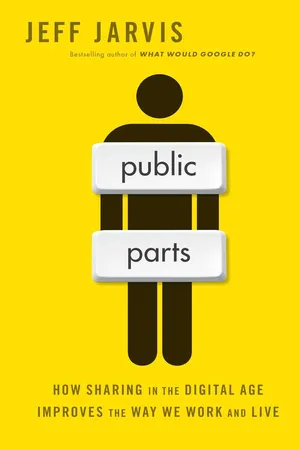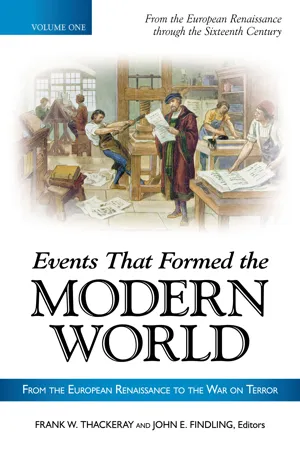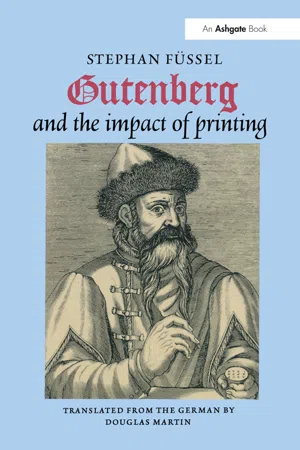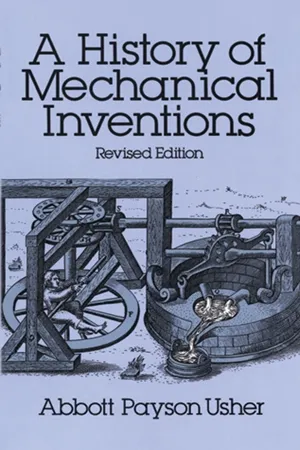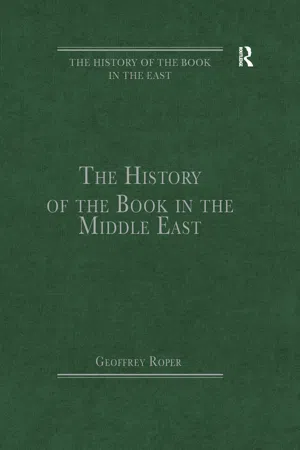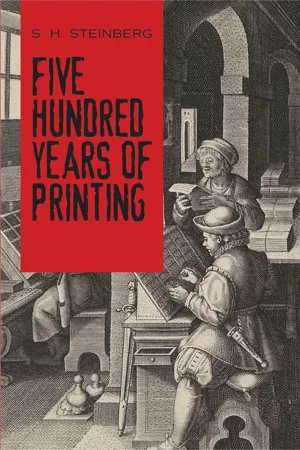History
Johannes Gutenberg
Johannes Gutenberg was a German inventor and printer who introduced the movable-type printing press to Europe in the 15th century. His invention revolutionized the production of books and other printed materials, making them more accessible to a wider audience and significantly impacting the spread of knowledge and ideas during the Renaissance and beyond.
Written by Perlego with AI-assistance
Related key terms
Related key terms
1 of 4
Related key terms
1 of 3
10 Key excerpts on "Johannes Gutenberg"
- eBook - ePub
Muslims and the New Media
Historical and Contemporary Debates
- Göran Larsson(Author)
- 2016(Publication Date)
- Routledge(Publisher)
Chapter 1The Print Revolution
From oral communication to print media
Trust in writing will make them remember things by relying on marks made by others, from outside themselves, not on their own inner resources, and so writing will make the things they have learnt disappear from their minds. Your invention is a potion for jogging the memory, not for remembering. You will provide students with the appearance of intelligence, nor real intelligence. Because your students will be widely read, though without any contact with a teacher, they will seem to be men of wide knowledge, when they will usually be ignorant.(Plato, Phaedrus, 275a)1Even though Johannes Gutenberg (1394/99–1468) of Mainz is often described as the founding father of print technology, he invented neither printing nor movable type, these technological innovations having already been developed in China long before the fifteenth century. His contribution to the history of printing is mainly connected with the fact that he perfected printing with movable type and by doing so brought print technology closer to its modern appearance.2 According to some estimates, the number of books that had been printed by the year 1500 was close to 13 million.3 These figures are of course difficult to substantiate and we should treat them with great care. Still it is relevant to talk about a print revolution. But why were the Ottomans so slow in adopting the technological innovations developed and refined by Johannes Gutenberg?To come closer to an answer to this large question, it is necessary to delimit and define the scope of this chapter and to specify its aims. The first aim is to give a general background to the introduction of the printing press in the Ottoman Empire. In order to discuss the impact of printing, however, it is essential to consider how the shift from oral to written communication transformed societies dominated by Muslim and Islamic traditions. This is therefore the second aim of the chapter, which also contains general discussions about knowledge, memory and text in Islamic traditions. This backdrop is important because it casts light on how authority was established and conveyed prior to and after the introduction of the printing technology. This general background will also make it easier to understand the debate that followed with the introduction of the printing press in the Ottoman Empire by the beginning of the eighteenth century. The main focus, however, is on how various Muslim authorities have discussed the introduction and rise of the print media. - Malcolm Vale(Author)
- 2020(Publication Date)
- Bloomsbury Academic(Publisher)
5 The impact of printIn those days, in the city of Mainz, located in Germany on the banks of the Rhine – and thus not in Italy as some have falsely written – was invented and devised by the Mainz citizen Johannes Gutenberg that marvellous and hitherto unheard-of art of printing and impression of books. (Johannes Trithemius, Annals of Hirsau abbey , for the year 1450)1Who dares to glorify the pen-made book? / When so much better brass-stamped letters look? (Wendelin of Speyer, printer, signing off his work in the colophon to his edition of Sallust (1470))Renaissance, Reformation and print2The period which saw the advent and subsequent course of the Northern Renaissance witnessed a number of seminal discoveries and innovations. These, it is argued, were to carry a lasting significance for the history of both Europe and the wider world. Among them, the invention of the mariner’s compass, the introduction and development of gunpowder, the discovery of Africa and the New World,3and the advent of printing with movable type have been singled out as especially seminal and far-reaching in their consequences. Together with the ‘Eyckian revolution’ in painting, the rise of polyphonic music, and the genesis of humanistic techniques of textual criticism, printing can be described as a true ars nova (‘new art’).4In origin, it was an exclusively Northern European innovation. Renaissance Italy very soon inherited, adapted and exploited what was essentially a German discovery. The ‘Germans’ (who at that time were thought to include the Netherlanders) could therefore not all be equated by contemporaries and later commentators with the ‘barbarians’ dear to Italian myth. A growing fifteenth-century cultural clash between Germans and Italians came to a head with the advent, in the mid-century, of printing and the printing press. Not only had the Italian humanists constantly asserted their superiority over their Northern contemporaries in the revival and refinement of the Latin language but, they claimed, the Germans (and the Northerners in general) had left copies of precious classical texts to rot, neglected and unread, in monastic and diocesan libraries. But, as the German abbot Johannes Trithemius (1462–1516) wrote,5the Italians could not take the credit for all the best discoveries of the age. The inception and origins of Johann Gutenberg’s (c. 1400–68) invention are obscure. He was a goldsmith, son of a goldsmith employed in the episcopal mint at Mainz, and appears to have conceived the idea of printing with movable type by the 1440s. It was apparently first put to use in c.- eBook - ePub
Public Parts
How Sharing in the Digital Age Improves the Way We Work and Live
- Jeff Jarvis(Author)
- 2011(Publication Date)
- Simon & Schuster(Publisher)
Though she ended up disagreeing with McLuhan’s views about technological inevitability, he convinced her of Gutenberg’s impact. Eisenstein chronicles the impact of movable type mostly in Europe, not its earlier introduction in the Far East, where the press did not—as we would say today—go viral. John Man, in his entertaining biography, The Gutenberg Revolution, provides a survey of earlier art. Reproducing a font’s characters ad infinitum is “an idea so obvious that it occurred to human beings remarkably early.” 4 The Phaistos Disc, made about 1700 B.C., has 241 images impressed onto its clay with metal stamps (they remain undeciphered). Ancient Egyptians used wooden blocks to set hieroglyphics onto tile. A key ingredient in printing—paper—was invented in China by A.D. 105 (or two hundred years earlier, according to some accounts 5) and brought to Korea and Japan five centuries later. The idea of impressing images on paper with stamps seems to have been born in the fifth century, Man reports. In the eighth century, books were being printed from blocks of wood or stone in China, Japan, and Korea. In 1234, Korea took the lead with the first use of movable type. But the writing systems of all three languages were too complex; calligraphy was still more efficient than printing. With the Latin alphabet and Gutenberg’s innovations, printing at last became sustainable and scalable. “One year,” says Man, “it took a month or two to produce a single copy of a book; the next, you could have 500 copies a week.” 6 This revolution wasn’t just cultural, it was economic. In the early modern period, Paul Yachnin’s Making Publics project says, culture found customers and a market to support itself, replacing the resources and control of the church and powerful patrons - eBook - ePub
Events That Formed the Modern World
From the European Renaissance through the War on Terror [5 volumes]
- Frank W. Thackeray, John E. Findling, Frank W. Thackeray, John E. Findling, Frank W. Thackeray, John E. Findling(Authors)
- 2012(Publication Date)
- ABC-CLIO(Publisher)
7 The Development of Movable Type, c. 1450
Introduction
No other invention contributed as much to the dissemination of knowledge during the Renaissance than the development of printing through the use of movable type. Historians credit Johann Gutenberg, of Mainz, now in Germany, with this invention and note that a Bible, called the Gutenberg Bible, was the first book published (in 1456) using movable type. There is some evidence that movable type was known in China as early as the eleventh century, Korea in the thirteenth century, and in Turkey sometime later, but it is unlikely that Gutenberg was aware of this. His invention came about when it did because of the need for a better method of written communication, spurred by the spread of literacy to laypeople, a rise in the interest in collecting fine manuscripts, and a desire for both secular and religious literature. Demand was high, and Gutenberg found a way to increase the supply.The facts of Gutenberg’s early life are shrouded in uncertainty. The year 1398 has long been accepted as his probable birth year, but Albert Kapr, in his 1996 biography, asserts that Gutenberg was born on June 24, 1400. His father, who was nearly 50 at the time of Johann’s birth, was a prominent merchant in Mainz; his mother, much younger, came from a patrician family. Both parents would have been literate and would have recognized the value of a good education. It is not known whether Gutenberg attended school in Mainz or learned to read and write at home, but it is likely that he went to a church-run day school. To have produced the Bible he did, he would have had to have learned Latin very well somewhere, and quite possibly, he learned his Latin at Erfurt University between 1418 and 1420.During the 1420s, he lived in Mainz, caring for his widowed mother and learning the goldsmith’s trade. There was a good deal of civic turmoil in Mainz at this time, mainly concerning matters of town finances, taxes, and the interests of competing factions, and perhaps because of this Gutenberg left the city in 1430 and lived in Strasbourg for a number of years. It may have been in Strasbourg that he began to develop the concept of printing with movable type; at any rate, he was back in Mainz by the mid-1440s, and in 1450, he borrowed some money from a lawyer, Johannes Fust, and set about capitalizing his invention. Two years later, Fust loaned Gutenberg more money and became his partner. It seems not to have been a happy arrangement, however, for in 1455, Fust seized most of Gutenberg’s printing equipment after the printer had fallen behind in his payments. This equipment was given to Peter Schoeffer, who worked for Fust and would soon marry his daughter. As for Gutenberg, he carried on with his printing work the best he could for a few more years, but by 1460, he had retired from the trade. The local archbishop gave him a pension in 1465, but he did not have much time to enjoy it. He died on February 3, 1468. - eBook - ePub
- Stephan Füssel(Author)
- 2020(Publication Date)
- Routledge(Publisher)
We simply do not know what Gutenberg did between 1444 and 1448; but there is evidence to show that he was back in Mainz by 17 October 1448. On that day he took out a loan of 150 gulden at 5 per cent interest from his cousin Arnold Gelthus. Just as in Strasbourg, Gutenberg sought business relationships with bankers and merchants with whose financial support he could put his new technical developments into practice. By 1450 his experiments had reached the stage that he could go ahead with the setting and printing of broadsides and extensive books.BRINGING THE TECHNICAL INVENTIONS TOGETHER
Gutenberg’s invention is as simple as it is ingenious: texts were broken down into their smallest components, i.e. into the 26 letters of the Roman alphabet, and from placing single letters in the right order the new text required would result time and again. Texts had been copied over the centuries by writing them out completely and sequentially, or by cutting them equally completely in wood (text and illustrations were being cut in wood for such contemporary “blockbooks” as prayers, ars moriendi or cribs for sermons), but now only the letters of the alphabet had to be cut and supplies cast and they would always be available for setting up whatever text was chosen. His second brain-wave was in effect as simple as it was technologically revolutionary: instead of transferring the ink to the paper by rubbing as had been done for 700 years in Asia, Gutenberg used the physical action of the paper- or wine-press to transfer the ink from typematter to dampened paper with one even and forceful impression (see Plate 2 , the first contemporary woodcut to show a press, dating from 1499).Very many stages were naturally called for in the development of this apparently obvious and straightforward procedure. Punches for individual letters, skilfully cut by goldsmiths, had been around for some time, and the engraving of sacred artefacts such as chalices and monstrances was a widespread technique. Casting methods were in use whether for bellfounding or coinmaking. It was a question of realising the idea by bringing together individual letters, and casting techniques, and finding the appropriater constituents of the typemetal. At the heart of Gutenberg’s discovery stands the development of a casting instrument which allowed the casting void to be precisely adjusted so that identical supplies of each type could be cast. No original instruments have survived from the fifteenth century, and the so-called adjustable hand mould shown in the textbooks only reached that precise form some two centuries later, but the earliest types which do survive and the quality of Gutenberg’s impression make it evident that some comparable casting instrument must have been part of the original invention. - eBook - ePub
The Library
A Fragile History
- Arthur der Weduwen, Andrew Pettegree(Authors)
- 2021(Publication Date)
- Profile Books(Publisher)
ART TWOTHE CRISIS OF PRINT
Passage contains an image
CHAPTER FOUR
THE INFERNAL PRESS
On 12 March 1455, Aeneas Piccolomini, the future Pope Pius II, wrote to Cardinal Juan de Carvajal in Rome with extraordinary news. In Frankfurt he had seen pages of a Bible produced by a ‘miraculous man’. This man had over 150 of these Bibles available for sale, an exceptional quantity for a single individual to possess. Piccolomini warned his patron that they were already selling out, and he apologised for not being able to acquire a copy for the cardinal, all the more so since the pages were ‘exceedingly clean and correct in their script, and without error, which Your Grace could read effortlessly even without glasses’.1Piccolomini was describing the book that we now know as the Gutenberg Bible. The ‘miraculous man’ was Johannes Gutenberg, the goldsmith of Mainz responsible for the invention of printing with moveable metal type. Although the invention would bring Gutenberg little fortune, it had a transformative impact on the future of the library, one that would shape for ever how libraries were built, and who was able to collect books. None of this, however, was immediately evident. The production of manuscript books increased in volume for at least two decades after the invention of printing in the middle of the 1450s. The birth of print did not cause the collapse of manuscript culture; manuscript writings, in many forms, would continue to play a major part in the work of government, in the provision of news and in the literary world, for many centuries. However, print did cast a shadow over the commercial manuscript book production that had emerged in France and Italy since the thirteenth century. As the new medium of print matured, other readers, for whom the services of a workshop like Vespasiano’s were too expensive, could aspire to become collectors. Ownership of a library no longer marked a man out as a member of the European social and political elite. - eBook - ePub
- Frederick W. Hamilton(Author)
- 2022(Publication Date)
- Otbebookpublishing(Publisher)
These arrangements seem to have been carried out but in 1455 the results were so unsatisfactory that Fust brought suit to recover the money advanced. The court decided at least in part in favor of Fust. Gutenberg was unable to return the money which the court awarded to Fust, and in consequence Fust took possession of the business and equipment. Gutenberg appears to have saved something out of the wreck and found a new financial backer in the person of Conrad Humery, a physician and town clerk of Mainz. To this new office are attributed a number of books and pamphlets, the most important one being a Catholicon, 1460, nearly eight hundred pages large folio. In 1462 the city of Mainz was besieged and sacked and the printing industry therein was broken up. In 1466, however, we find printing done in Eltville, a suburb of Mainz, with type which is supposed to have been Gutenberg’s. As this was the birthplace of Gutenberg’s mother and there was a family estate there it is quite probable that the Gutenberg-Humery office was set up in that place. In 1465 we find Gutenberg appointed one of the officers of the court of Adolph II, the militant prince-bishop who had captured and looted Mainz three years before. The patent states that this appointment is made on account of “agreeable and voluntary service rendered to us and our bishopric.” This is the last we hear of Gutenberg except the record of his death in February, 1468.In brief, this legend tells us that Gutenberg was for years a patient but disappointed seeker after an invention which he had dreamed of but could not make practical, that he finally succeeded only to be robbed of the fruits of his success by an unscrupulous money lender, that in his old age he began again with undaunted courage, struggling always against financial difficulties and always failing to make a wordly success of his great invention, reaping his only reward in the tardy favor of the prince-bishop. That Fust and his son-in-law, Schoeffer, did make a financial success of printing, and that further success was made by Bechtermüntz, who is said to have been a relative of Gutenberg and to have inherited type and material from his second shop, and that from Mainz as a center the art of printing spread over the civilized world are beyond question. These are the legends of the invention. Now let us see if we can find out what really happened.Passage contains an image
CHAPTER IV The Invention
The study of the question of the invention of printing, like that of any other historical question, must deal with the examination of three classes of evidence or so many of them as may be available. These three classes of evidence, in order of their importance, are first, remains, second, contemporary documents, and third, documents or evidence of a later period. For example, there may be tradition widely current and running backward in literary form to within a hundred years of the death of the person referred to, that a certain king ruled in a certain country and did certain things. That is evidence of the third class. There may be extant contemporary works of travelers, histories of other countries, or even the published recollections of old men, which said that at a certain period that king lived and did certain things. That is evidence of the second class. There may be coins, official inscriptions, public documents, emanating directly from this king or even bearing his signature. This is evidence of the first class. This class of evidence is conclusive. The second class is strong, but not conclusive, the third class is very uncertain. - eBook - ePub
A History of Mechanical Inventions
Revised Edition
- Abbott Payson Usher(Author)
- 2013(Publication Date)
- Dover Publications(Publisher)
Institutes (1468) which is most important in this connection. As Fust was the capitalist rather than the technician, it was really Schoeffer who was responsible for the renown of Mainz as a center of printing.III
There are thus text evidence of a sort and specimens of printing from movable type that indicate decisively the presence of three stages in technical development. In the order of the earliest work in each group, these stages were successive though they follow at close intervals, and the improvements in technique were diffused so slowly that it is only toward the last decade of the fifteenth century that the methods of printing were generalized, at the level of the best practice. It is fairly clear that we have to deal with a process of development which involves a number of technologic changes, any one of which must properly be classed as an invention though none of them could in propriety be described in such a general phrase as the “invention of printing” nor even in a more restricted sense as the “invention of printing from movable type.” The inconclusiveness of the long-drawn-out controversy is due in large measure to the inaccuracy of the statement of the problem and to the naive disposition to assume that only one invention was involved. The whole matter is cogently restated by the title of the pamphlet by Mori: “What Did Gutenberg Invent?” Unfortunately, no wholly decisive answer can be given, because we really have no competent contemporary evidence as to the details of the processes by which the various early books were produced. At the same time, much light has been thrown upon the subject by the writings of Enschedé, of Hodgkin, and of Mori, and, for the purposes of illustrating the inherent complexity of the process of invention, it is much more important to reach a sound appreciation of the scope of the problem than to arrive at positive conclusions. - eBook - ePub
- Geoffrey Roper(Author)
- 2017(Publication Date)
- Routledge(Publisher)
3 Apparently not everybody welcomed the coming of the printing press, and it is unquestionable that printing did not replace the manuscript tradition immediately and without any resistance. The shift from script to print was not simply a physical shift from pen to type, but equally a mental shift from an old to a new view of the nature of the book.Elizabeth Eisenstein, a prominent researcher in the field of book history, put forth the idea that the printing press was an “agent of change” that sparked a “communications revolution.”4 She went on to explain that her particular notion of “revolution” is inspired by Raymond Williams’s oxymoronic expression “long revolution,”5 in the sense that it is not about a fast change as a result of a single act but rather a continuous but irreversible process, whose effects become visible in the course of its development.6 Later scholarship in the field of book history, however, has not fully endorsed Eisenstein’s “revolution” theory, criticizing her non-contextualized approach according to which the advent of printing with movable type in itself created a print culture, and insisting that when the issue of printing is studied within a given socio-cultural context it becomes apparent that manuscript copying and printing continued to exist side by side or as competing technologies until well into the eighteenth century.7However, when discussing the introduction of printing into the world of Islam and into Ottoman Turkish society in particular,8 most scholars have remained bound to the “print revolution” paradigm, with a few exceptions in which that introduction is interpreted within the framework of a cultural “evolution.”9 In the context of this controversy the question whether or not Ibrahim Miiteferrika’s printing enterprise was an “agent of change” in the world of Islam has received conflicting replies. Previous scholarship has tended to give a negative answer to this question since Ibrahim did not sell the total number of copies he printed, and since his enterprise was suspended after his death. However, the present article seeks to show that Ibrahim Müteferrika’s printing press was indeed an agent of change—though not an agent of immediate - eBook - ePub
- S. H. Steinberg(Author)
- 2017(Publication Date)
- Dover Publications(Publisher)
‘The most prolific cutter of Hebrew types’ was also a gentile. Guillaume Le Bé (1525–98), a Frenchman from Troyes, learned the trade in Robert Estienne’s type-foundry. In 1545 he went to Venice and there he cut no fewer than eight Hebrew founts for two Christian printers during the next four years, in addition to Greek and Roman punches. Back in France, he supplied more Hebrew founts to Garamond and Plantin.Thereafter,. with the exception of the founts designed by Christopher van Dyck for the firm of Elzevir and the Jewish printer, Joseph Athias of Amsterdam (d. 1691), Hebrew typography went from bad to worse. Only quite recently the Monotype Corporation has brought out some types which go back to the Reggio and Soncino models. An interesting suggestion was put forth in 1932 by Hugh Schonfield: a romanized Hebrew, adapting Caslon and Bodoni and including caps, small caps, lower case and italic founts which so far have been absent from Hebrew printing.5. PRINTING IN THE VERNACULAR
THE effect of the spread of printing upon the intellectual conditions of the European nations resulted in the simultaneous strengthening of two diametrically opposed trends of thought. On the one hand, the ties which linked up the individual members of the European commonwealth of nations were strengthened. The thoughts of philosophers, the discoveries of scientists, the writings of poets, and many other products of the human mind now became common property and were soon to be the precious heritage of all nations regardless of their national and personal origin. The medieval conception of the Respublica Christiana was dying when Gutenberg made his invention; the printer’s craft resuscitated it in the form of the Respublica Litterarum in which every nation exerts its proportionate influence.On the other hand, the spread of printing tended to deepen, and even created, national frontiers in the sphere of intellectual activities. For the more the circle of readers widened, the less authors and publishers could rely upon their mastering Latin, the common vehicle of communication in the Middle Ages. The public who were now given an easy access to literature wished it to be made easier still and preferred books printed in their mother tongue to those in the idiom of scholars.
Index pages curate the most relevant extracts from our library of academic textbooks. They’ve been created using an in-house natural language model (NLM), each adding context and meaning to key research topics.
Explore more topic indexes
Explore more topic indexes
1 of 6
Explore more topic indexes
1 of 4

